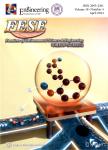PCDD/Fs emission, risk characterization, and reduction in China's secondary copper production industry
PCDD/Fs emission, risk characterization, and reduction in China's secondary copper production industry作者机构:State Key Laboratory of Urban and Regional Ecology Research Center for Eco-Environmental Sciences Chinese Academy of Sciences Beijing 100085 China University of Chinese Academy of Sciences Beijing 100039 China
出 版 物:《Frontiers of Environmental Science & Engineering》 (环境科学与工程前沿(英文))
年 卷 期:2013年第7卷第4期
页 面:589-597页
核心收录:
学科分类:0830[工学-环境科学与工程(可授工学、理学、农学学位)] 07[理学] 070602[理学-大气物理学与大气环境] 09[农学] 0706[理学-大气科学] 090203[农学-茶学] 0902[农学-园艺学]
基 金:supported by the National Science and Technology Support Project of China
主 题:polychlorinated dibenzo-p-dioxins and diben-zofurans (PCDD/Fs) secondary copper production emis-sion risk China
摘 要:Secondary copper production is one of the key polychlorinated dibenzo-p-dioxins and dibenzofurans (PCDD/Fs) emission sources in China, but research and data on this issue are rare. In 2004, when the Stockholm Convention entered into force in China, PCDD/Fs emissions from secondary copper production contributed to 32.2% of the total release. In this paper, PCDD/Fs emission dynamics from secondary copper industry were discussed and cumulative risks were characterized. From 2004 to 2009, industrial policies played an indirect role in PCDD/Fs reduction, but its effects are still limited. The Yangtze River Delta, Pearl River Delta and central regions were among the top three of dioxin emissions from secondary copper production in China. Shanghai, Shan- dong, Zhejiang, and Jiangxi had comparatively higher accumulated risk and were recommended as the priority regions for promoting PCDD/Fs emission control in China. From 2009 to 2015, the PCDD/Fs emission dynamics in the secondary copper industry were presented through simulation. PCDD/Fs emission equations were established, resulting in the recommendation of control technology conversion rate at 30% for small scale smelters and 51%- 57% for large and medium-sized enterprises in 2015. In conclusion, both indirect policy and direct control technology retrofitting should be integrated for more effective PCDD/Fs emission reduction in secondary copper industry.



